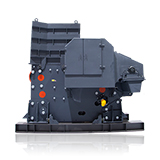Carbon Footprint Reduction in Mineral Processing
Mineral processing plays a critical role in modern society by supplying the raw materials needed for construction, manufacturing, energy generation, and technology. However, the sector is also energy-intensive and a significant contributor to greenhouse gas (GHG) emissions. With global initiatives driving industries toward carbon neutrality, the reduction of carbon footprints in mineral processing has become an urgent priority. This article explores the main sources of emissions in mineral processing, strategies for decarbonization, and future directions for sustainable development.

Sources of Carbon Emissions in Mineral Processing
The carbon footprint of mineral processing originates from several interlinked factors:
1. Comminution (crushing and grinding):
Energy consumed in comminution can account for up to 50% of a mine’s total energy usage. Inefficient grinding mills and crushers contribute heavily to indirect CO₂ emissions, particularly when powered by fossil fuels.
2. Material handling and transportation:
Conveyors, pumps, and haul trucks powered by diesel or electricity further increase the carbon intensity of operations.
3. Smelting and refining:
Pyrometallurgical processes often rely on high-temperature furnaces fueled by coal, natural gas, or oil, leading to significant direct CO₂ output.
4. Use of reagents and chemicals:
The production and consumption of flotation agents, cyanide, and other chemicals involve carbon-intensive supply chains.
5. Auxiliary operations:
Ventilation, dewatering, and water treatment facilities also add to the cumulative footprint.

Strategies for Carbon Footprint Reduction
1. Energy Efficiency in Comminution
Since comminution represents the largest share of energy use, improving efficiency in crushing and grinding has the greatest potential for emissions reduction. Strategies include:
- High-pressure grinding rolls (HPGR): These reduce energy demand compared to traditional SAG mills.
- Advanced mill design and control: Smart sensors and AI-driven control systems optimize energy input relative to ore hardness and feed size.
- Ore sorting: Removing barren rock before milling reduces throughput volume and energy waste.
2. Renewable and Low-Carbon Energy Sources
Replacing fossil-based electricity with renewable sources drastically reduces indirect emissions:
- Solar and wind power integration: Mines located in remote regions are increasingly adopting microgrids combining renewable generation with battery storage.
- Hydropower utilization: Where geographically feasible, hydropower provides a stable and low-carbon energy supply.
- Green hydrogen: Emerging as a replacement for fossil fuels in high-temperature processing, hydrogen can decarbonize smelting and refining.
3. Process Optimization and Digitalization
Digital transformation supports both operational efficiency and carbon reduction:
- Digital twins: Virtual models of mineral plants enable scenario testing and predictive optimization.
- AI and machine learning: Algorithms adjust grinding, flotation, and leaching parameters in real time to minimize waste and energy intensity.
- Automated monitoring: Continuous monitoring of carbon-related KPIs drives accountability and performance improvements.
4. Waste Heat Recovery and Circular Economy
- Heat recovery systems: Capturing and reusing waste heat from furnaces or grinding operations reduces overall fuel demand.
- Byproduct valorization: Tailings and slag can be repurposed for construction or cement industries, displacing carbon-intensive raw materials.
- Water recycling: Minimizing water treatment energy requirements reduces emissions and supports sustainability goals.
5. Carbon Capture, Utilization, and Storage
Although still developing in mining, CCUS technologies can be applied to mineral processing plants:
- Post-combustion capture: Retrofitting smelters and kilns with carbon capture units.
- Mineral carbonation: Using mine tailings rich in magnesium or calcium silicates to chemically bind CO₂ into stable carbonates.
Future Outlook
The next decades will reshape mineral processing under the influence of decarbonization:
- Integration with renewable grids: Mines will increasingly function as hybrid energy ecosystems, combining solar, wind, batteries, and hydrogen.
- Next-generation comminution: Emerging techniques, such as microwave-assisted grinding, promise order-of-magnitude energy savings.
- Blockchain for transparency: Carbon footprint certification at each stage of mineral supply chains will become essential for ESG compliance.
- Holistic life cycle assessments (LCAs): Companies will evaluate carbon impacts across extraction, processing, transport, and recycling to inform strategic decisions.
Carbon footprint reduction in mineral processing is not only an environmental necessity but also an economic and social imperative. By combining energy efficiency, renewable energy integration, process digitalization, and circular economy practices, the mining sector can significantly reduce its greenhouse gas emissions.
At ZENITH, we are at the forefront of this transformation. Our advanced crushing and grinding equipment is designed to maximize energy efficiency and minimize waste, making them ideal for sustainable mineral processing. Choose our state-of-the-art machinery to not only enhance productivity but also contribute to a greener, more sustainable future. As the industry evolves, Shanghai ZENITH remains dedicated to supporting our partners in achieving their carbon reduction targets and advancing toward a carbon-neutral world.







